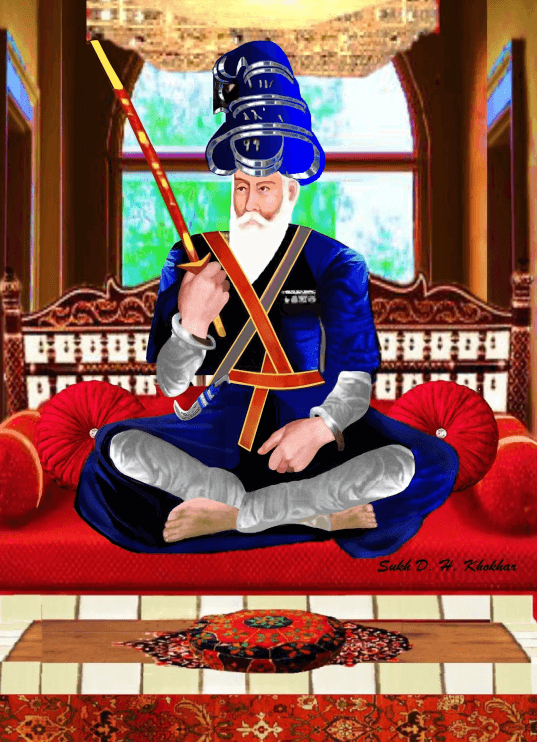Natha Singh, son of Bhai Sukha Singh Shaheed, was only two months old when his father, along with Mehtab Singh, beheaded Massa Ranghar in Harmandir Sahib in broad daylight and escaped with his severed head, avenging the desecration of the holy temple. The family, along with newly born Natha Singh, was still at Hanso Majra. The beheading created great unrest amongst the Ranghar villages surrounding Hanso Majra. Knowing who had committed this act, they started to descend on Hanso Majra to avenge their leader. Sukha Singh was nowhere to be found, so the Ranghars started harassing the family, who now had no strong men to defend them.
Sahib Singh and Nannu Singh, the two strong warriors of the remaining family, were also involved in the fight against the Mughals. This upheaval was beyond tolerance for the remaining family in the aftermath of the beheading of Massa Ranghar. As per family archives and records, in around 1847, suffering daily attacks from the Ranghars, Mai Bhaghan, the wife of Sukha Singh, decided to abandon their house and their farmlands for the sake of the safety of her only son and the surviving family and moved to Sunam, her parental village.
Natha Singh grew up in his maternal grandparents’ house. Times were such that getting an education was not the greatest need. Whatever education he could get at the local gurudwara was enough for him. Hegrew up to be a strong young man, though not as tall as the rest of the family and had a wheatish complexion. In keeping with the family traditions, he was educated in the art of shuster vidhya, and helped the family on the farms. But this was not to be his way of life for long, knowing his father as he did, who visited the family from time to time because of his Panthic struggles against the Mughals and invaders who attacked Punjab to loot and plunder.
